
Ontamox-CV Dry Syrup
Manufacturer
Fitwel Pharmaceuticals Private Limited
Salt Composition
Amoxycillin (200mg) + Clavulanic Acid (28.5mg)
Key Information
Short Description
Ontamox-CV Dry Syrup is an antibiotic medicine that helps treat bacterial infections of the ear, nose, throat, chest, lungs, teeth, skin, and urinary tract.
Dosage Form
Powder for Oral Suspension
Introduction
Ontamox-CV Dry Syrup is an antibiotic medicine that helps treat bacterial infections of the ear, nose, throat, chest, lungs, teeth, skin, and urinary tract. It is capable of killing bacteria that have become resistant to other therapies and thus also helps treat tuberculosis that is resistant to other treatments.
Directions for Use
Never give Ontamox-CV Dry Syrup until and unless prescribed by the doctor. You must also never share your child’s medicine with anyone else even if they show similar symptoms.
Safety Information
Side Effects
No common side effects listed.
How it works
Ontamox-CV Dry Syrup is an antibiotic. It has two active agents amoxycillin and clavulanic acid. Amoxycillin works by preventing the formation of the bacterial protective covering (cell wall) essential for the survival of the bacteria. Whereas clavulanic acid serves a special purpose of inhibiting an enzyme (beta-lactamase) that is produced by resistant bacteria. This makes the combination of amoxycillin and clavulanic acid an effective line of treatment for many types of infections.
Quick Tips
Your child must complete the entire course of antibiotics. Stopping too soon may cause the bacteria to multiply again become resistant or cause another infection. Your child may have a bitter taste in the mouth after the intake of Ontamox-CV Dry Syrup. Eating citrus fruit or sipping plenty of water or fruit juice may help. Encourage your child to drink plenty of water in case diarrhea develops as a side effect. Never give Ontamox-CV Dry Syrup to treat common cold and flu-like symptoms caused by viruses. Never save medicine for future illnesses. It cannot be said whether the same medicine will work on future infections. Check ‘expiry’ before giving Ontamox-CV Dry Syrup to your child. Immediately discard all the expired medicines. Stop Ontamox-CV Dry Syrup immediately if your child develops an itchy rash facial swelling or breathing difficulty. Report to the doctor without any delay.
Related Medicines
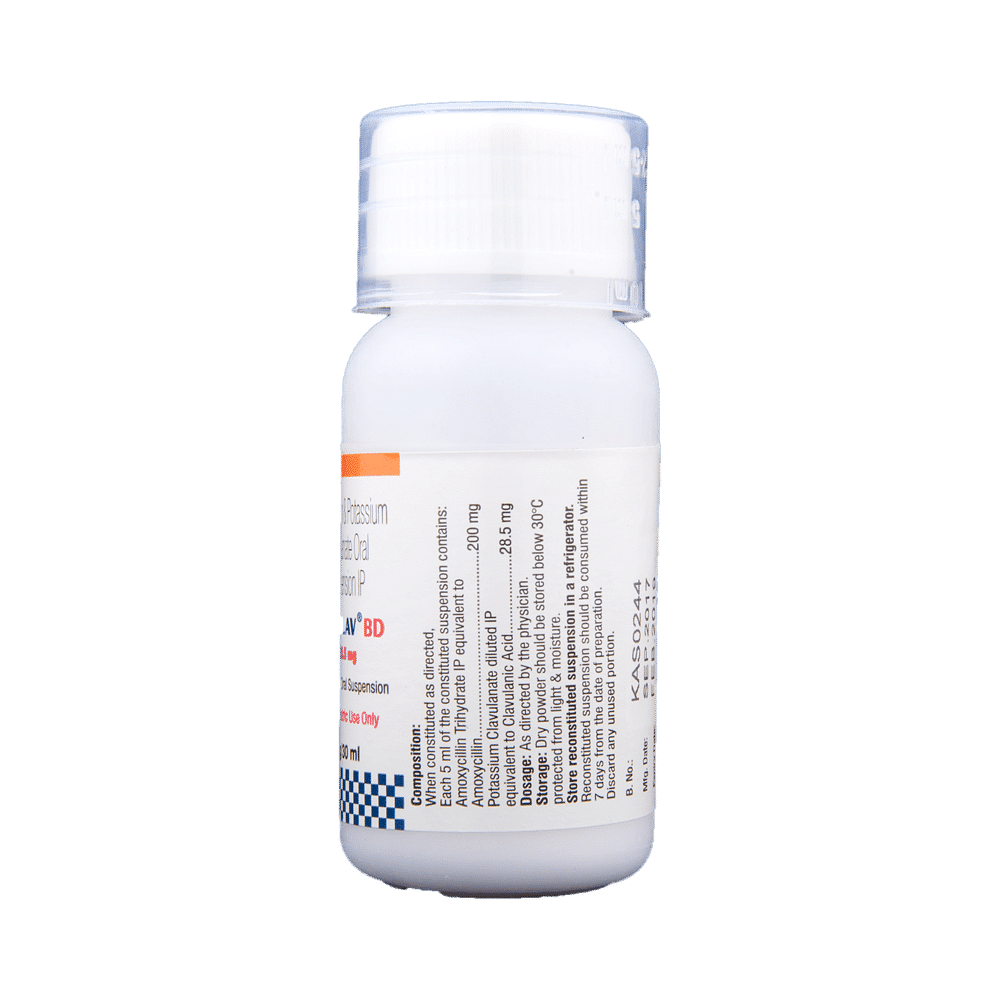
Moxclav BD 228.5mg Suspension
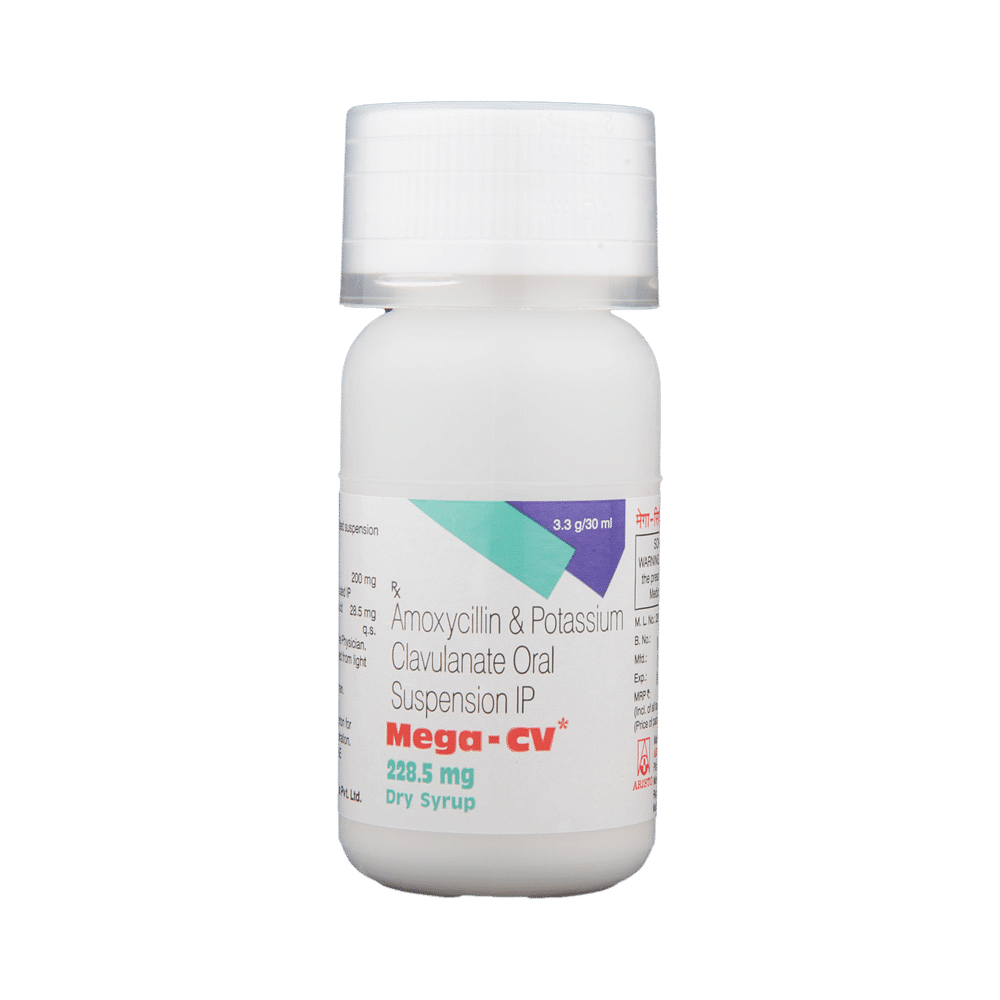
Mega-CV 228.5mg Dry Syrup
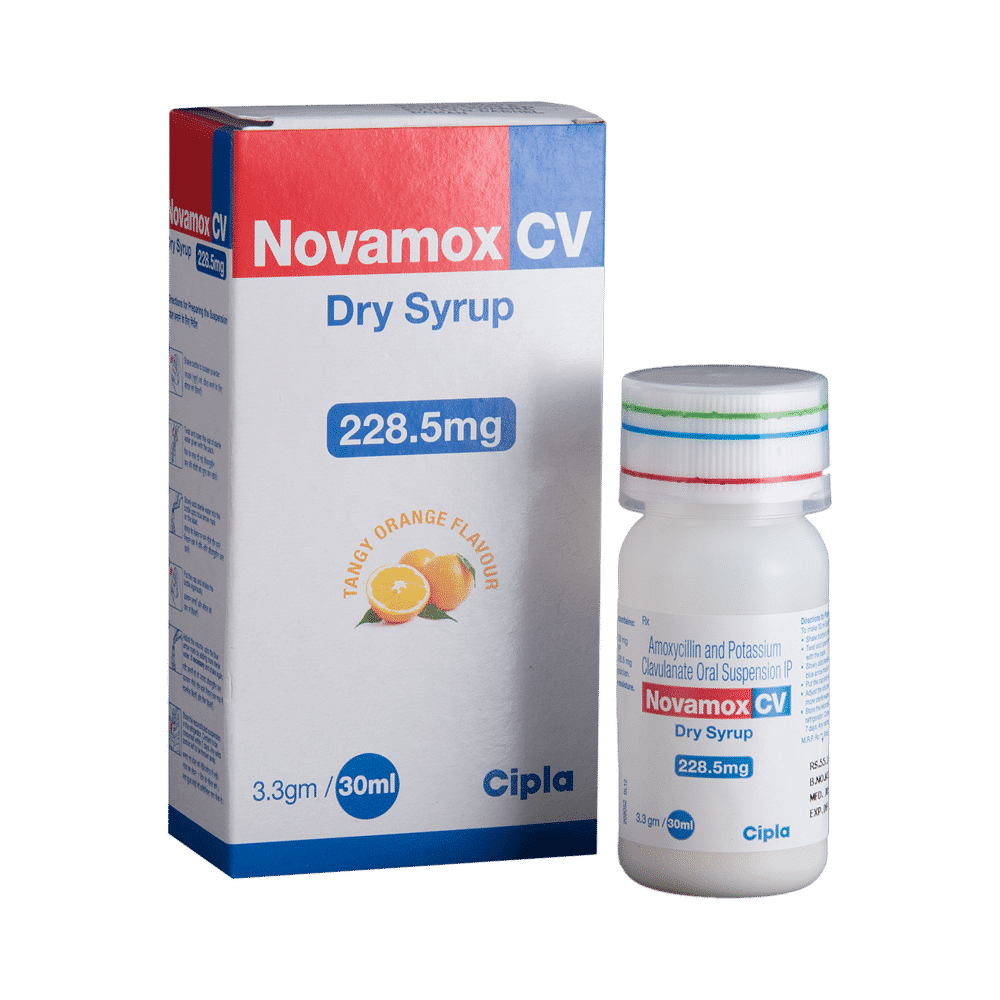
Novamox CV 228.5mg Dry Syrup
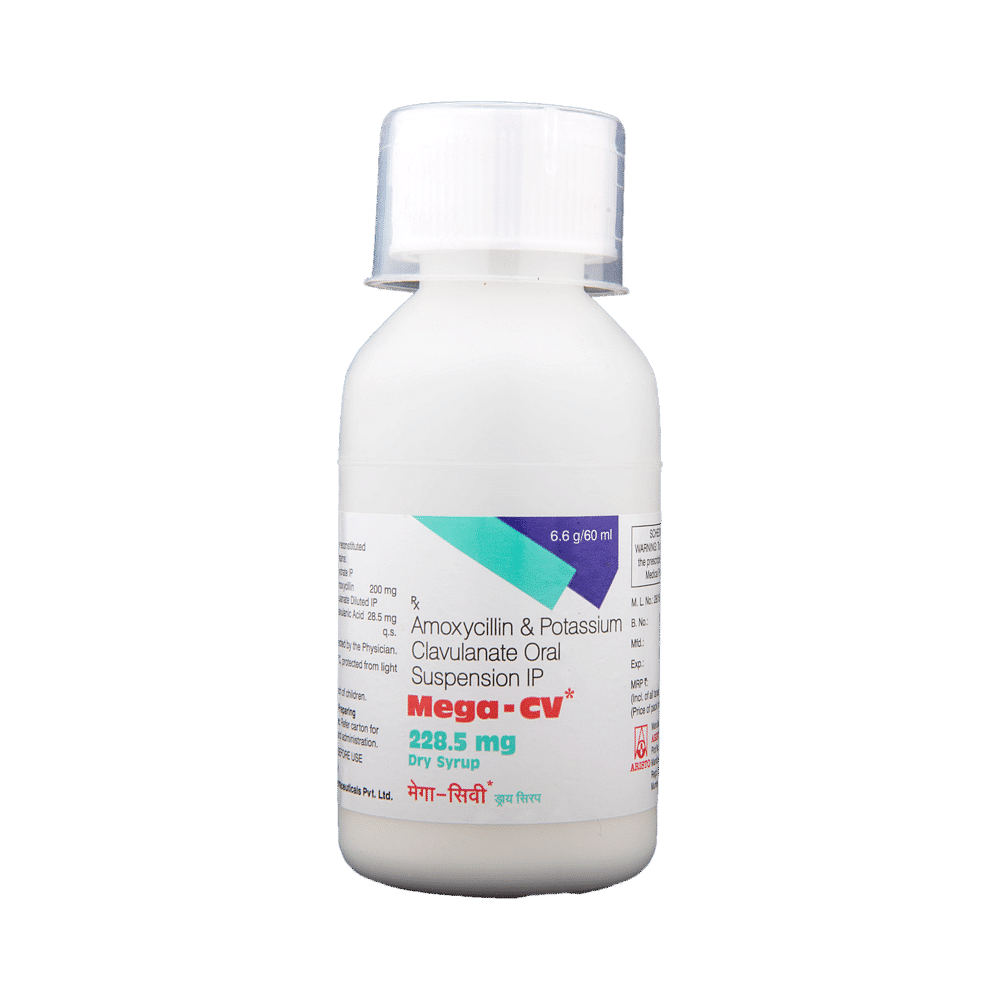
Mega CV 228.5mg Dry Syrup

Sensiclav BD 228.5mg Dry Syrup
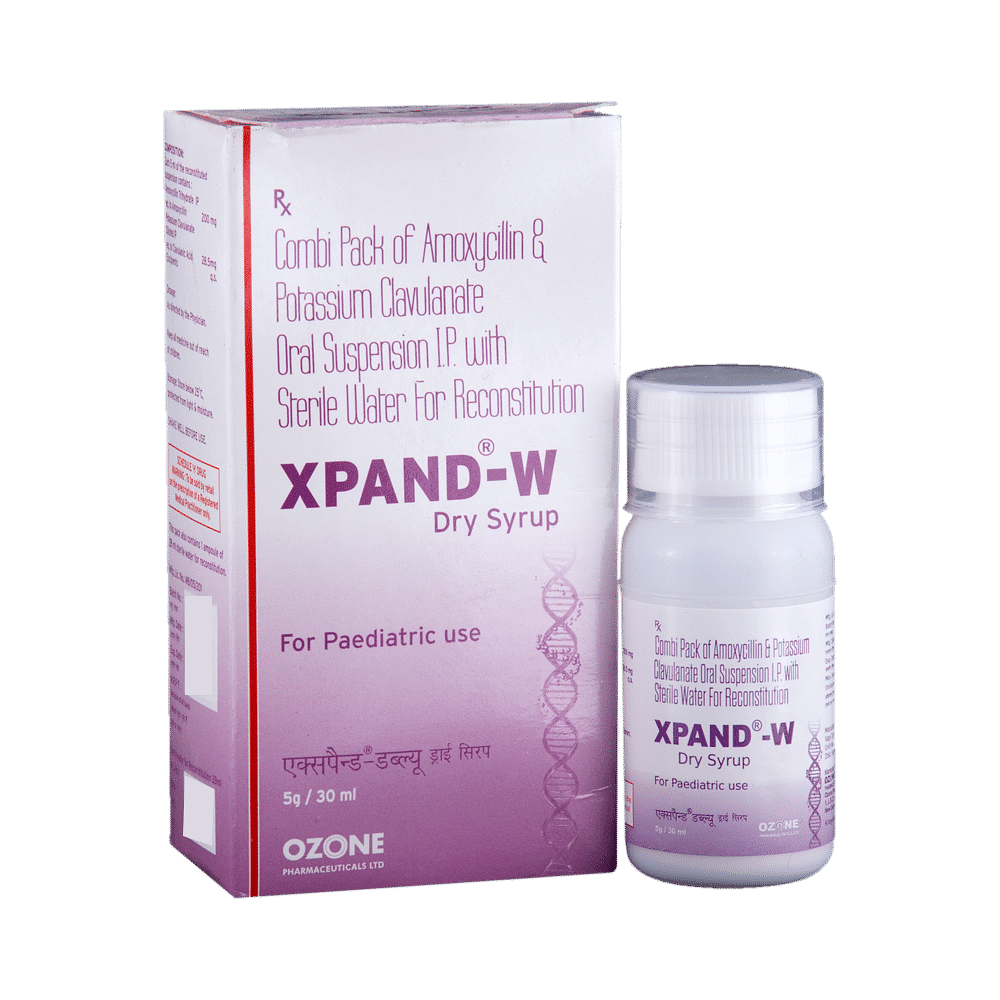
Xpand-W Dry Syrup

Blumox-CA 228.5mg Dry Syrup
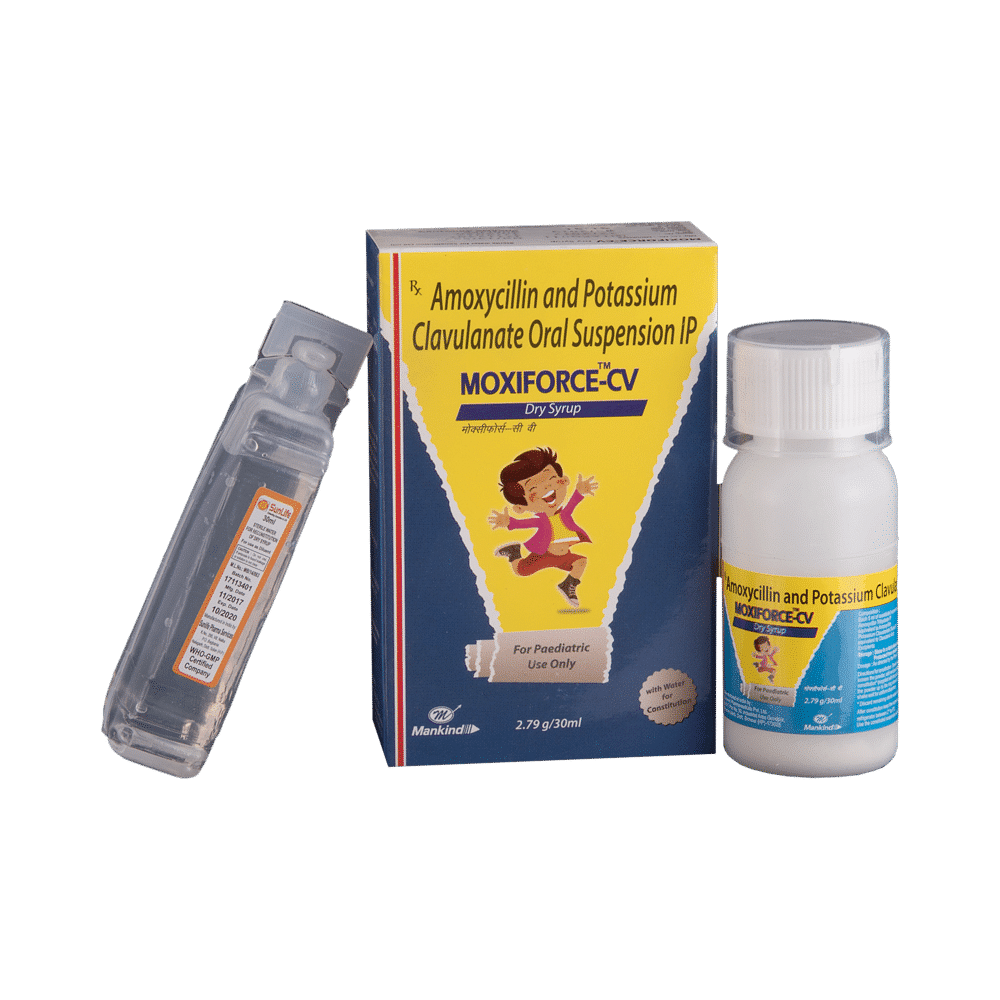
Moxiforce-CV Dry Syrup
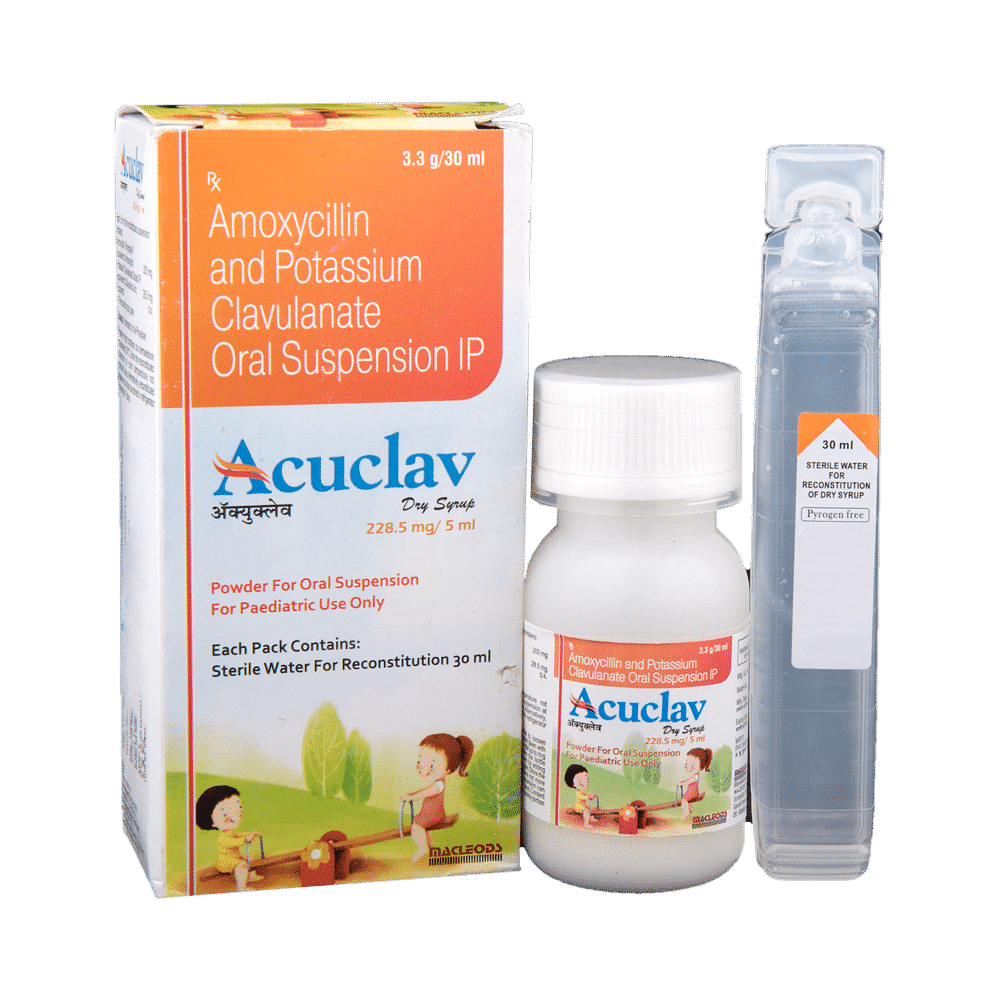
Acuclav 228.5mg Dry Syrup

Moxidas-CV Dry Syrup
Frequently asked questions
Can other medicines be given at the same time as Ontamox-CV Dry Syrup?
Ontamox-CV Dry Syrup may interact with other medicines or substances. Please tell your doctor about all other medications your child is taking before starting treatment with this syrup. It's also important to consult with your child's doctor before giving any medicine to your child.
Can I get my child vaccinated while on treatment with Ontamox-CV Dry Syrup?
Generally, antibiotics do not interfere with the ingredients in vaccines. However, it's important for children taking antibiotics to avoid vaccination until they recover from the illness itself. Once your child feels better, the vaccine can be given.
Which lab tests may my child undergo while taking Ontamox-CV Dry Syrup on a long-term basis?
Periodically, during prolonged therapy, the doctor may monitor kidney and liver function tests to ensure your child's well-being.
Can I give a higher than the recommended dose of Ontamox-CV Dry Syrup to my child?
Giving a higher dose of this medicine can increase the risks of side effects. If your child experiences worsening symptoms, please consult with their doctor for re-evaluation.
Can I stop giving Ontamox-CV Dry Syrup to my child when the symptoms are relieved?
No, do not stop giving this medicine until the full course of treatment is complete, even if you feel better. The symptoms may improve before the infection is fully cured. Therefore, continue administering the medication as prescribed by your doctor.
Can the use of Ontamox-CV Dry Syrup cause diarrhea?
Yes, Ontamox-CV Dry Syrup can cause diarrhea. This is because it is an antibiotic that kills harmful bacteria. It may also affect the good bacteria in your child's stomach and cause diarrhoea. Encourage your child to drink plenty of fluids if they experience diarrhea. If the diarrhea persists or you notice signs of dehydration (decreased urination with dark-colored and strong-smelling urine), consult with your doctor before administering any other medication.
Do all viral common colds result in secondary bacterial infection?
Most viral infections do not lead to secondary bacterial infections. In fact, giving antibiotics during a viral infection can increase the risk of side effects. Therefore, only use antibiotics after consulting your child's doctor.
The mucus coming out of my child’s nose is yellow-green. Is it a sign of a bacterial infection?
Yellow or green mucus in the nose is not necessarily indicative of a bacterial infection. It is common during a cold as mucus thickens and changes color from clear to yellow or green. Most symptoms resolve within 7-10 days.
Is there any sign which shows that my child needs immediate medical attention?
You should contact your child's doctor immediately if they experience severe allergic reactions (difficulty breathing, skin rashes), gastrointestinal problems (diarrhea), or signs of liver damage (weakness, paleness, vomiting). Though rare, these side effects are serious and require expert medical attention.


